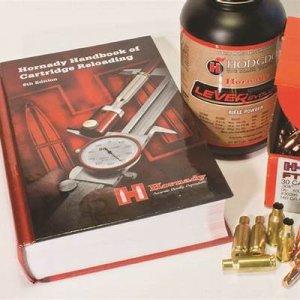Foggy47
5 year old buck +
Interesting how American gun nuts continue to improve on perfection. Over the past few decades a number of improvements in cases have come about: Basically, Short, fat, lower taper, cartridges with a more pronounced shoulder angle has been found to improve performance while longer, low drag, bullets have improved accuracy at long range. (and a whole lot more).I don't see it that way. 6.5x55 is too long to optimally seat long bullets and fit in a short action. It has a lot of case taper and shallow angled shoulders which contribute to much faster case stretch which results in shorter brass life and more brass trimming to reuse cases. Most of all there's the SAAMI max pressure thing - ammo manufacturers don't want to load it to modern pressures and get sued when someone blows up their old mauser with it. Because the x55 case is bigger, it takes more powder to reach the same velocity, which equals more recoil for same velocity.
Basically it got created to compete or improve in some aspects on David Tubb's 6xc that was dominating across the course competition at the time but with less wildcatting headaches with inconsistent chamber specs, brass, load data, and better barrel life. The background story:
These are really not new things.....as P.O. Ackley was converting many old chambers back in the 50's into what is commonplace today. I used to shoot allot of PD's......and my favorite cartridge for shooting prairie dogs was the 22-250. One problem with the 22-250 tho is that it really extrudes the brass upon firing...thus constant trimming and thinner brass and head separations are a concern. I converted mine to an Ackley improved chamber and the brass stretching became far more manageable while adding some additional speed. Nearly eliminated the need for trimming.
The sacrifice is the reliable feeding of these cartridges with low body taper and abrupt shoulders can be some concerns for big game hunters.....especially if chasing the toothy varieties, I suppose..
At one time I really liked to experiment with the latest and greatest new bullets and cartages as that was a "labor of love" for the sport. ......but that has worn off for me. BT/DT I suppose. Now, I'd just like to purchase some factory ammo that can do the job and call it a day. It's a lot of time and effort to reload for wildcat or specialty guns with tight necks and such. Can be fun.....and there is so much to learn.
Edit: .......or, a PITA. lol

